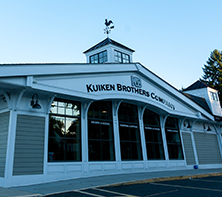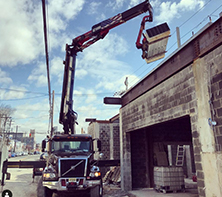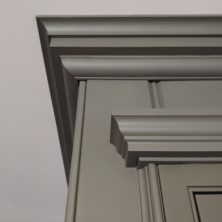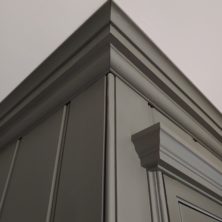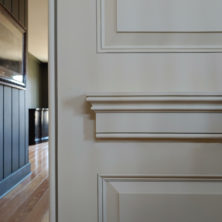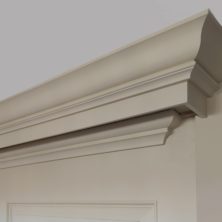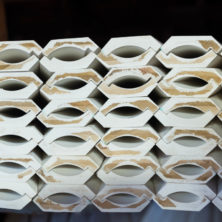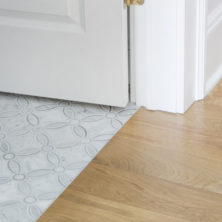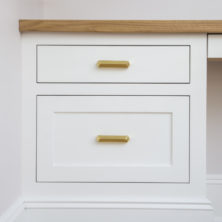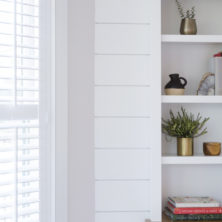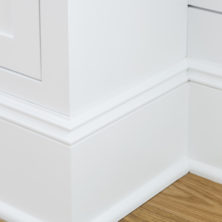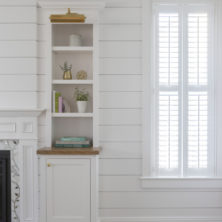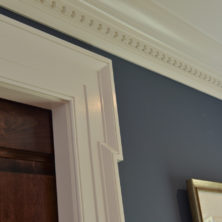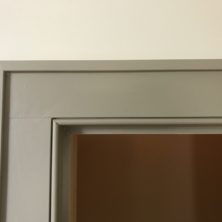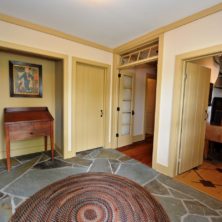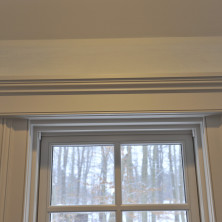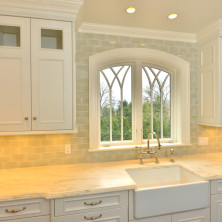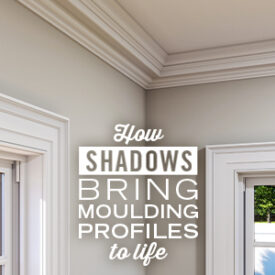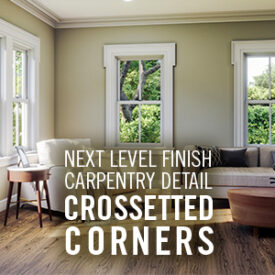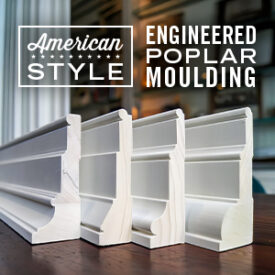
Kuiken Brothers Classical Moulding and Modern Craftsman Moulding collection are milled with the finest American grown Appalachian poplar. The use of moulding dates back thousands of years to ancient Greece and Rome and they are widely considered to be the building blocks of interior ornamentation.
By their simplest definition, mouldings are constructed to create a contrast of light and dark. The shading gives structural objects definition without changing the material or applied pigments. And yet, if you look at the two moulding profiles above, you’ll see that somewhere along the line a modification has taken place and for many years, the transformation has gone unnoticed by the building community. However, there is a groundswell of American Craftsman noticing that the profile above on the left just doesn’t look or feel right. Something has morphed over time and it has all but lost any ornamentation detail. In this post we’ll take a look at this evolution, see where we think we changed course, and offer solutions to help take a new one into the future.

The photo above helps us illustrate this change in design. The typical casing profile above (KB126, milled from MDF) is flat and its backband is elongated. What should be 90 degree cuts have a V-groove in its place and the bead on the end is large and only partially detailed. Once installed, the result will be a simple and dull shadow line at best.

In comparison, the Classical casing profile above (KB136, milled from poplar) has clearly defined 90 degree incisions, classical details and proportions. Note the very simple bead on the end. This delicate detail would be virtually impossible to mill from MDF. Once installed, the KB136 casing will have strong shadow lines to define the opening (window or door) it surrounds.

Today, almost all moulding profiles attempt to replicate designs from products craftsmen created more than 200+ years ago. Many of these original craftsmen studied and understood proper scale and proportion and the ancient orders of Greek and Roman architecture.
However, each time we attempt to replicate the past without meticulous study, we allow the designs to become subtly distorted. A simple way to reproduce these elegant design elements is to take a sample of the existing moulding, trace it on a piece of paper, fax it to a mill, and ask the mill to replicate it.
When mouldings go through these phases of reproduction, they inevitable lose the original crispness that was once handcrafted. Edges are rounded off, beads are no longer perfectly round, beaded planes are filled in and not as deep. One must also factor in the layers of paint that may be on top of the original moulding. Layers of paint can impact the original shape and character/ lines of the moulding once it is traced by the replicator.

When lumberyards want to offer their own moulding profiles, they often reference other moulding profile examples and may perpetuate historically-inaccurate and corrupted profiles by slightly modifying the width of length of the profile in an effort to make it slightly unique. Unfortunately, each modification will distort the original, classically designed profile. Eventually, the skewed mouldings enter the market and become nearly impossible to remove.
The Right Stuff

In 2010, we announced one of the largest launches of classical American moulding products ever in the United States. The KB Classical Moulding Collection catalog includes seventy, in-stock, historically-inspired moulding profiles, and represents classic American moulding profiles designed nearly 200 years ago. The products are categorized by architectural style (Early American, Georgian, Federal, Greek Revival, Colonial Revival, and Traditional Revival) to show which crown, casing and base mouldings go together.
Until that time, many of these profiles were available only through custom production runs, and coordinating design elements was difficult and time-consuming. The free catalog simplifies the millwork selection process.

Kuiken Brothers offers on-line CAD files for architects and designers to incorporate detail into their blueprints. Free moulding samples are available so designers and their clients can match them to existing mouldings or see how they will actually look before installation.
If you would like more information on the Classical Moulding Collection for an upcoming project, please feel free to give us a call (201) 652-1000, send us an e-mail info@kuikenbrothers.com, or complete the online Contact Us Form and we will follow up with you right away.



